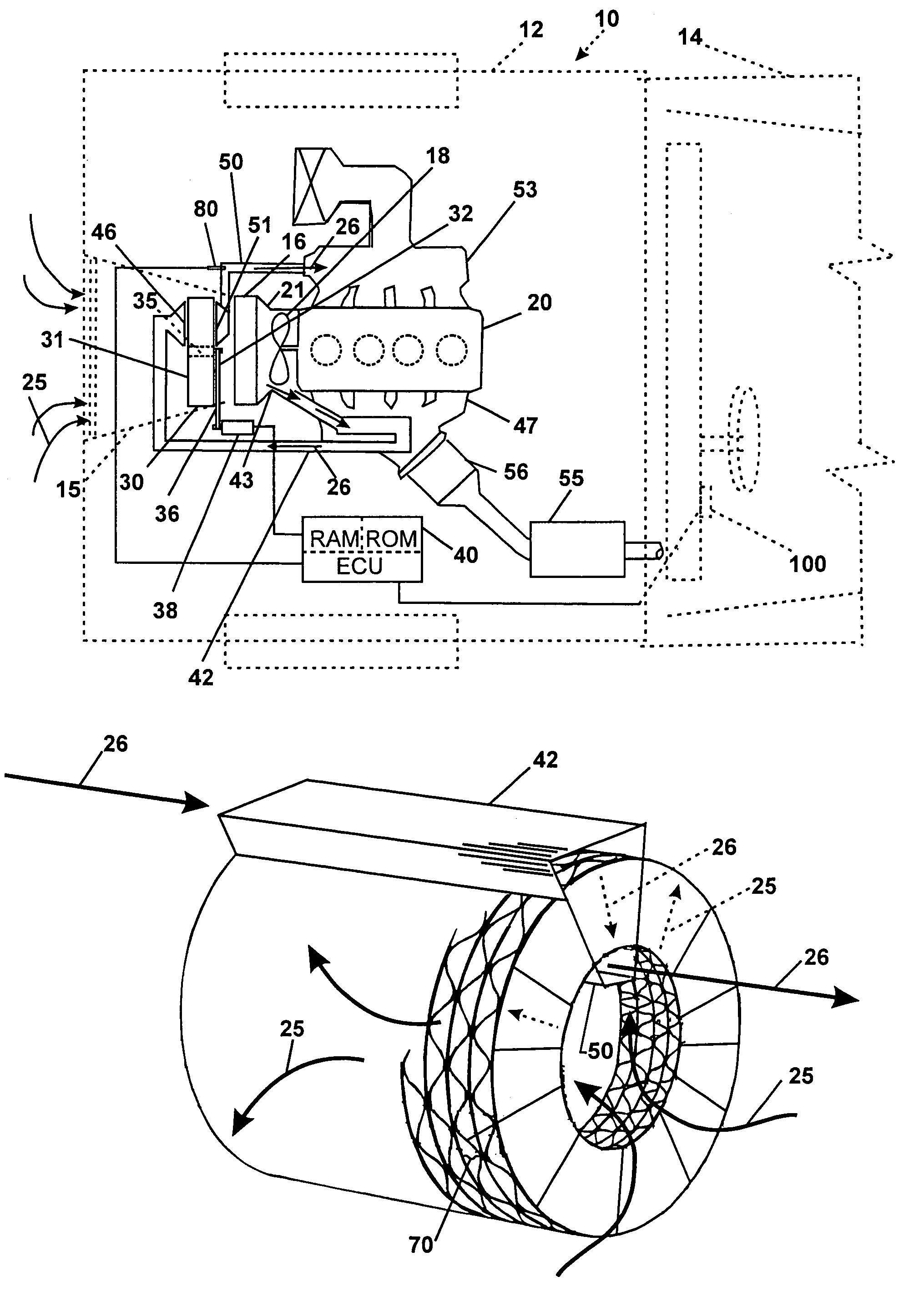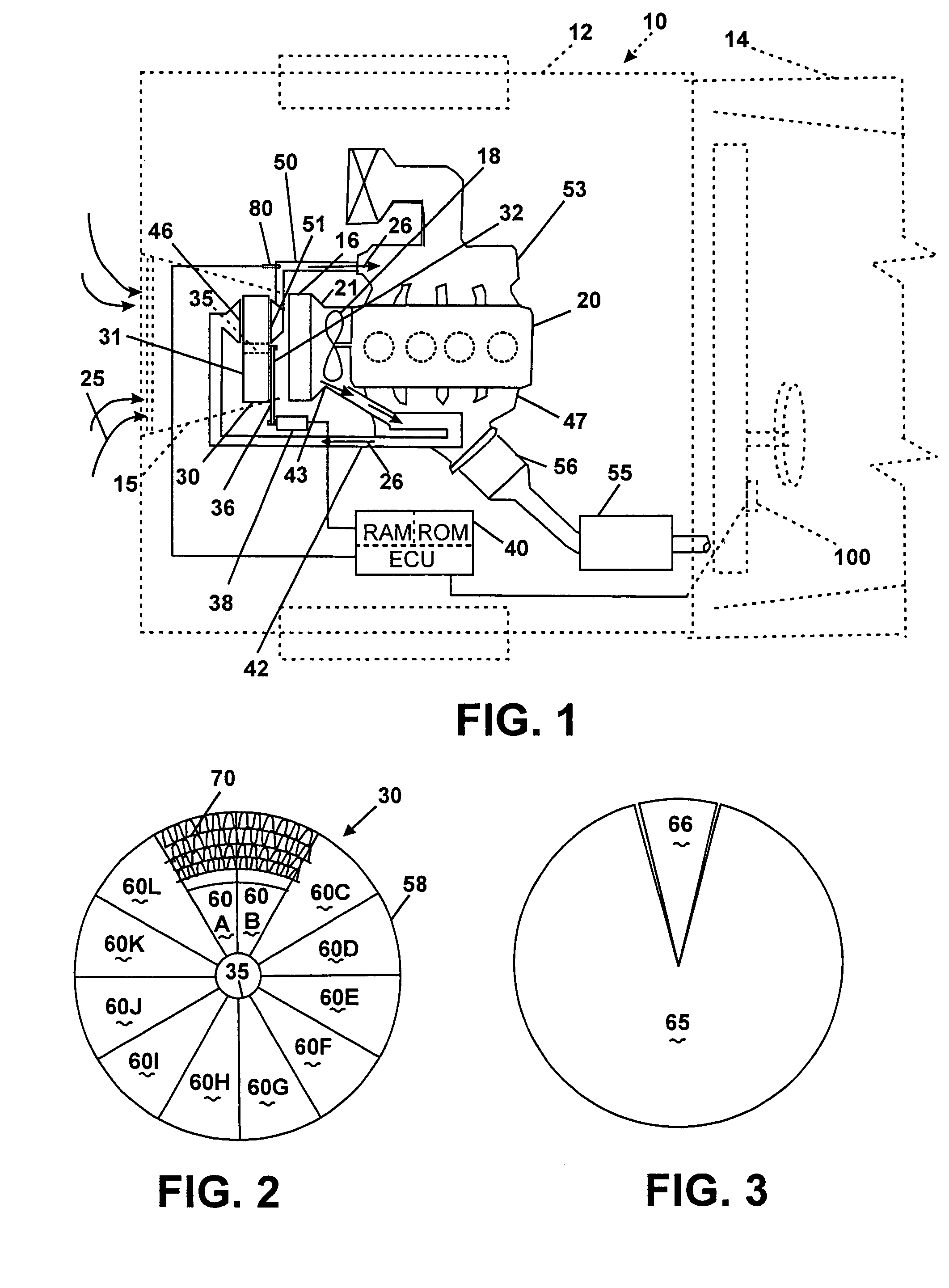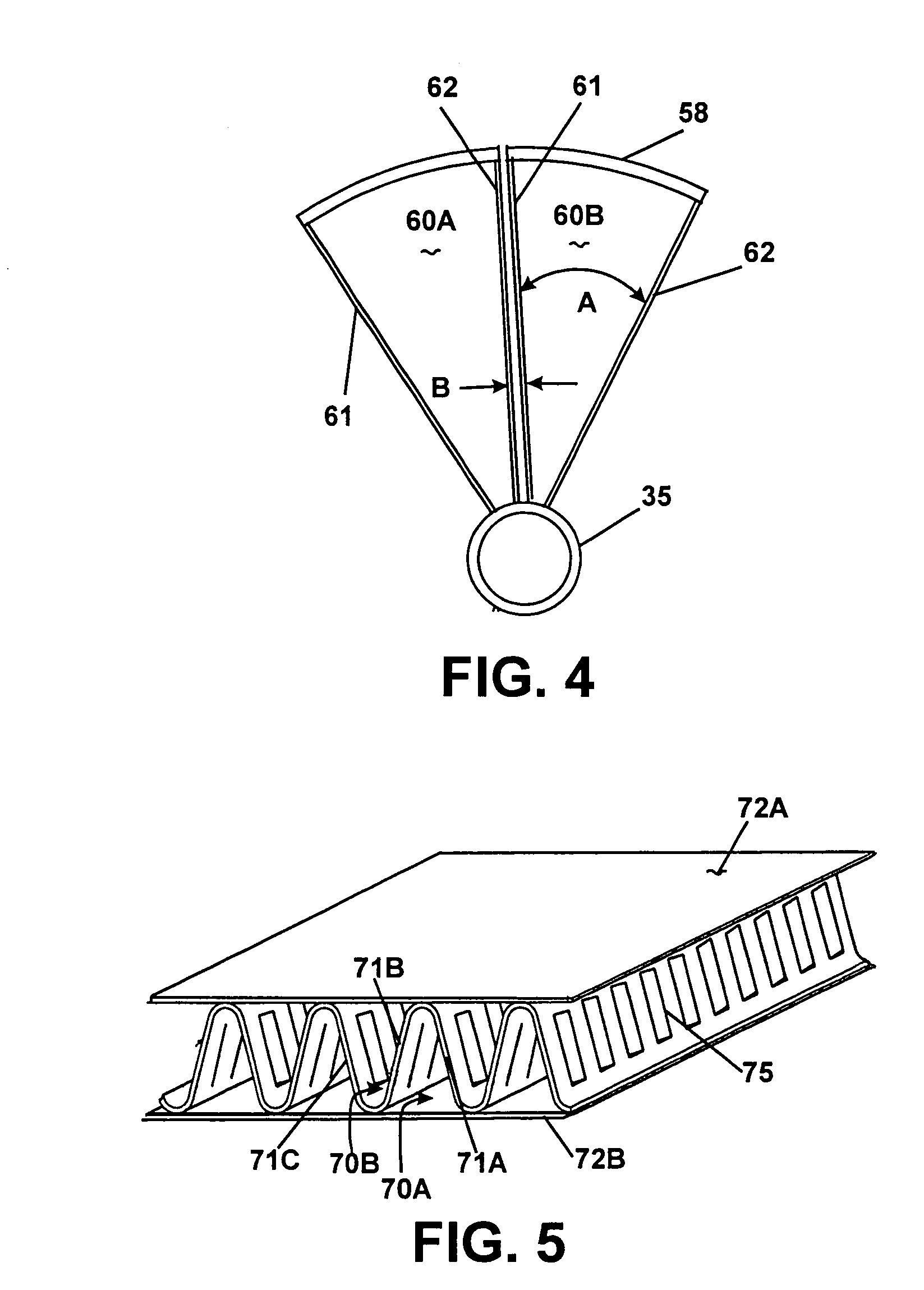Vehicular atmosphere cleansing method
a technology of vacuuming and vacuuming atmosphere, which is applied in the direction of physical/chemical process catalysts, separation processes, lighting and heating apparatus, etc., can solve the problems of inability to plasticize to a viscosity and adverse effects on the porosity of activated carbon, and achieve the effect of cleaning the atmospher
- Summary
- Abstract
- Description
- Claims
- Application Information
AI Technical Summary
Benefits of technology
Problems solved by technology
Method used
Image
Examples
example 1
[0110]This example is a control experiment demonstrating that an adsorbent is needed for adsorption of hydrocarbon and that the substrate has no adsorptive activity.
[0111]A blank monolith with no coating (i.e., no adsorbent) was placed in the reactor and heated to 50° C. Approximately 5 ppm of toluene was fed to the reactor. No adsorption was observed. The same result occurred when a radiator minicore was used (i.e., no adsorption was observed):
[0112]
VariableUnitsHydrocarbonToluene[HC]ppm C1 5SubstrateMonolith orMinicoreAdsorbentNoneLoadingG / in3 0Adsorption° C.50Temp.Adsorption TimeMinutes30Desorption Temp° C.NADesorption TimeMinutesNATemperature° C. / minNARamp# of Cycles 1% HC Adsorbed 0% HC DesorbedNANA means nonapplicable.
example 2
[0113]In this experiment beta zeolite was coated onto a standard monolith. The results are shown below.
[0114]
VariableUnitsResultsHydrocarbonToluene[HC]ppm C14.43SubstrateMonolithAdsorbentZeolite BetaLoadingg / in31.06Adsorption° C.50Temp.Adsorption TimeMinutes30Desorption Temp° C.200Desorption TimeMinutes30Temperature° C. / min10Ramp# of Cycles2% HC Adsorbed27% HC Desorbed98
example 3
[0115]A aluminum minicore coated with activated carbon (Kreha PW) was tested for toluene adsorption. Results are contained in the table below.
[0116]
VariableUnitsResultsHydrocarbontoluene[HC]ppm C15.06SubstrateMinicoreAdsorbentActivatedCarbonLoadingg / in30.54Adsorption° C.50Temp.Adsorption TimeMinutes30Desorption Temp° C.200Desorption TimeMinutes30Temperature° C. / min10Ramp# of Cycles2% HC Adsorbed39% HC Desorbed100
[0117]Although the substrates are different, the activated carbon in this example shows a higher adsorption percentage than that achieved with the zeolite in Example 2.
[0118]This coated minicore was also tested for ozone destruction at three temperatures (75, 50 and 25° C.). The inlet ozone concentration was 250–290 ppb. The dew point of the inlet air stream was 15° C. The table below shows the results.
[0119]
SpaceVelocityOzoneTemperature (° C.)(hr −1)Conversion (%)25400,0004525800,0003150400,0005950800,0004475400,0006375800,00048
[0120]Thus the activated carbon adsorbs hydroc...
PUM
| Property | Measurement | Unit |
|---|---|---|
| temperatures | aaaaa | aaaaa |
| particle size | aaaaa | aaaaa |
| density | aaaaa | aaaaa |
Abstract
Description
Claims
Application Information
 Login to View More
Login to View More - R&D
- Intellectual Property
- Life Sciences
- Materials
- Tech Scout
- Unparalleled Data Quality
- Higher Quality Content
- 60% Fewer Hallucinations
Browse by: Latest US Patents, China's latest patents, Technical Efficacy Thesaurus, Application Domain, Technology Topic, Popular Technical Reports.
© 2025 PatSnap. All rights reserved.Legal|Privacy policy|Modern Slavery Act Transparency Statement|Sitemap|About US| Contact US: help@patsnap.com



